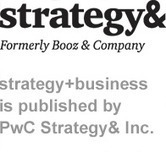Community member post by Jan Kwakkel How can decision making on complex systems come to grips with irreducible, or deep, uncertainty? Such uncertainty has three sources: Intrinsic limits to predictability in complex systems. A variety of stakeholders with different perspectives on what the system is and what problem needs to be solved. Complex systems are…
Via Philippe Vallat, Create Wise Leader



 Your new post is loading...
Your new post is loading...



















